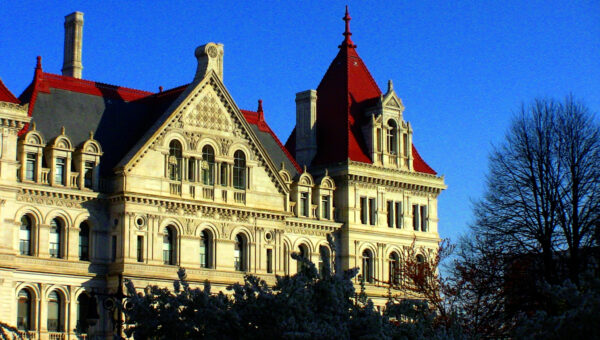
Food for Thought: Down the Block, Deep in the Stacks
This week’s New York Times article is by Christopher Gray.
Michael Sterne, then the Real Estate editor of The New York Times, conceived of the Streetscapes column in 1986, and paid me the compliment of hiring me to write it. Now, with my final column, it may be appropriate to present an apologia for what I hoped to do, and what I have done.
The landscape of local history, particularly the history of buildings, was pretty bare in 1975, when I was fresh out of Columbia’s School of General Studies. Rather than take up the work of a poet or a cabdriver, I decided to go for the big money: architectural history.
Traditionally, the field had been restricted to the tour bus monuments that academics studied for years at a time: the Duomo in Milan, the United States Custom House in New York — maybe even, for the adventurous academic, the Chrysler Building. To me, these did not capture the essence of the city. It was the little dead ends, the deserted loft districts, the old ethnic clubs — these were what were interesting. Streetscapes The history of New York City architecture, real estate and urban development.
There had been a couple of efforts to cover local history, but generally New York’s past was a foreign country to the city’s magazines and newspapers.
Mike, who died in 1995, gave me license to write about the everyday buildings, to investigate even the most trivial, incidental, oddball structures. And so I went after near-ruins like Cass Gilbert’s 1908 railroad stations of the Bronx, sprinkled like broken gems along a disused rail line. Then there was the little Art Moderne taxpayer building with a garden in back at Third and 77th. Or the grotesque-laden Britannia apartment house at 527 West 110th.
Soon I started writing about whole blocks, because these are what show the evolution of New York, especially of everyone’s personal city — stepping out the front door in New York is by its nature to take a walking tour.
Another goal was to explode the idea that a building has “ahistory,” that there is a single narrative that wraps it all up. Each building has a few competing histories. Mansions, for instance, were the domain not just of fancy people upstairs, but also of servants below — who were they? Where did they come from, and go? And what about the people who moved in when the old pile was broken into apartments? There are many stakeholders in a single structure, not just the Astors and Vanderbilts. To read the full article, click here.

